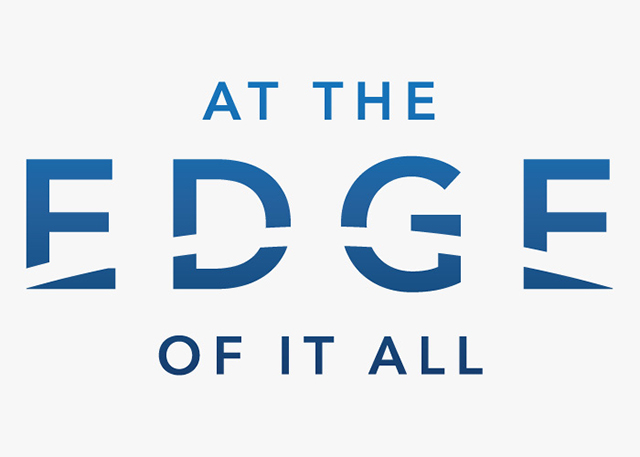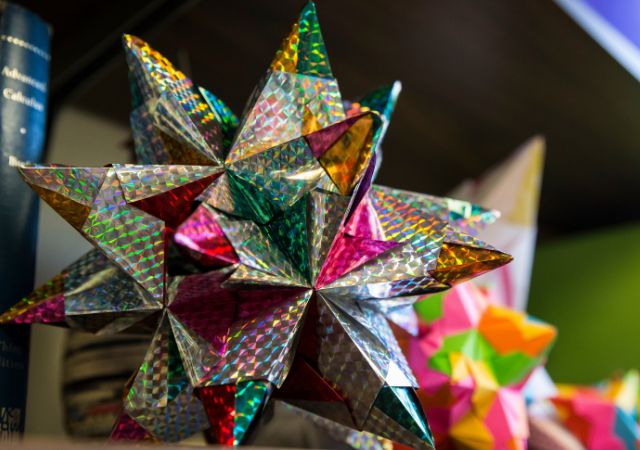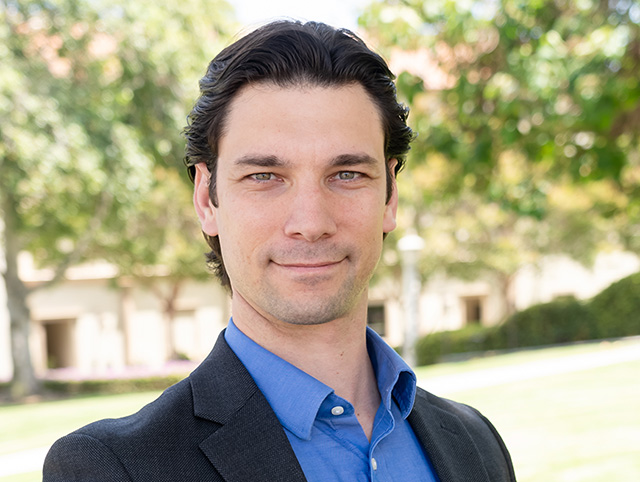Faculty Spotlight: Q&A with Raquel Martinez, PhD

The USD College of Arts and Sciences (the college) hired 14 new faculty members in three distinctive themes – Borders and Social Justice, Technology and the Human Experience and Climate Change and Environmental Justice – this past fall.
As part of the university's commitment to academic excellence, the college endeavored to assemble a cohort of teacher-scholars who offer a strong contribution to the diversity and excellence of USD through teaching, scholarship, service and collaboration.
This spring semester, the college is featuring each new faculty member with a Q&A series every week. Each spotlight highlights their professional journeys, academic expertise, research and their goals for fostering academic and personal growth within the USD community.
Learn more about Assistant Professor of Physics and Biophysics Raquel Martinez, PhD, her background and her passion for research and teaching in the Q&A below.
Cluster-Themes: Borders and Social Justice and Technology and the Human Experience
Q: Please share your name, title, department and the subjects or courses you will be teaching at USD.
A: My name is Dr. Raquel A. Martinez, and I am an assistant professor in the Department of Physics and Biophysics. I am currently teaching general physics classes and labs for non-physical science majors. In the future, I hope to teach more courses for physics majors, as well as astronomy courses.
Q: What key experiences have shaped your career and where you are today?
A: I think I was in elementary school when the idea that I would study space and the stars took hold. My parents always encouraged my curiosity in astronomy, math and science, so there was no doubt that I would go to college to pursue a STEM degree. However, after receiving my undergraduate degree in astrophysics from CalTech, I felt a little lost and burnt out. I ended up working for a few years in Human Resources and insurance billing, but that underlying passion for the stars was still there. After three years in the workforce, I pursued a terminal master’s degree in Astronomy at Wesleyan University to take physics and astronomy classes again, as well as get some research experience that would help me ultimately decide whether pursuing a PhD would be for me. Turns out it was! And something that I really appreciated was the small liberal arts environment, where students were allowed to explore their varied interests while getting an excellent education and high-impact research opportunities that would prepare them for any kind of career they’d like to pursue. From that point on, I knew I wanted to become a professor at an institution that primarily serves undergraduates.
Q: What sparked your interest in the Borders and Social Justice and Technology and the Human Experience cluster theme, and what drew you to this particular focus? How are you contributing to that focus in your work here?
A: The cluster-hire themes I was most drawn to were Borders and Social Justice and Technology and the Human Experience. It’s sometimes hard to think about how physics and astronomy might fit into these themes, but one crucial aspect of these disciplines that I think I can impact the most is the culture of physics and astronomy. Many people’s experiences with physics are perhaps not the most pleasant, and I hope to change that with the types of environments I create in my classrooms and research spaces. Sometimes there are needless barriers that prevent folks from pursuing a STEM degree, and I hope to break those down through my teaching and mentoring.
Q: What aspects of joining the University of San Diego community are you most excited about?
A: As I mentioned, my career goal after receiving my master’s degree was to become a professor at an institution like the University of San Diego that primarily serves undergraduates. The few times I visited USD before being hired, I was blown away not only by the beauty of the campus but also by the commitment to excellence in undergraduate liberal arts education that the administration and faculty have. Folks are supported and encouraged to experiment, assess and revise their approaches in the classroom and research spaces. I am very much looking forward to exploring and implementing strategies that make my teaching of physics and astronomy more effective for USD students. On a more personal note, I grew up in the San Gabriel Valley, and I’m so glad to have landed back in Southern California, close to where I was raised and my family.
Q: How do you envision your course curriculum contributing to the academic and personal growth of USD students?
A: Something that I want to achieve as a physics professor is to instill in every one of my students that they can be a science person even if they do not intend to major in physics or pursue graduate school. I plan on developing and implementing learning experiences in the classroom that simultaneously expose students to science content alongside STEM practices to help develop a student’s intuition for problem-solving. I hope to show students that they can take the practical skills they’ve honed in my classroom anywhere.
Q: What current research projects are you working on or interested in, and how do they align with your cluster theme?
A: My research focuses on understanding the various stages of star and planet formation at their extremes: from stars to objects in the substellar mass regime, from the youngest of binary stars to solar systems in the final stages of forming planets, from characterizing individual systems to building samples for population studies. I focus on the low-mass end of the star and planet formation paradigm, pursuing multiple projects that further our understanding of how exoplanets (planets that orbit stars outside our solar system) form and evolve. For example, I am currently using the Keck telescopes on Mauna Kea to measure how quickly Jupiter-like exoplanets form. I’m also preparing for the future of exoplanet characterization with the upcoming cutting-edge spectrograph Santa Cruz Array of Lenslets for Exoplanet Spectroscopy (SCALES). By pursuing these projects, I aim to expand the exoplanet characterization parameter space, which is a key step in preparing for the future of exoplanet observations with the James Webb Space Telescope and the Thirty Meter Telescope.
Q: What’s an interesting or unique fact about yourself that others might not know?
A: My entire family are sports lovers, so we all played soccer and little league baseball/softball growing up. My favorite sport to play was softball, but CalTech did not have a team, so I walked on and played four years of college basketball (Go Beavers). I am also an avid New York Times Crossword puzzler with a streak of over 1,130 consecutive puzzles solved. Fingers crossed that my new faculty duties don’t interfere with my streak!
— USD News Center



